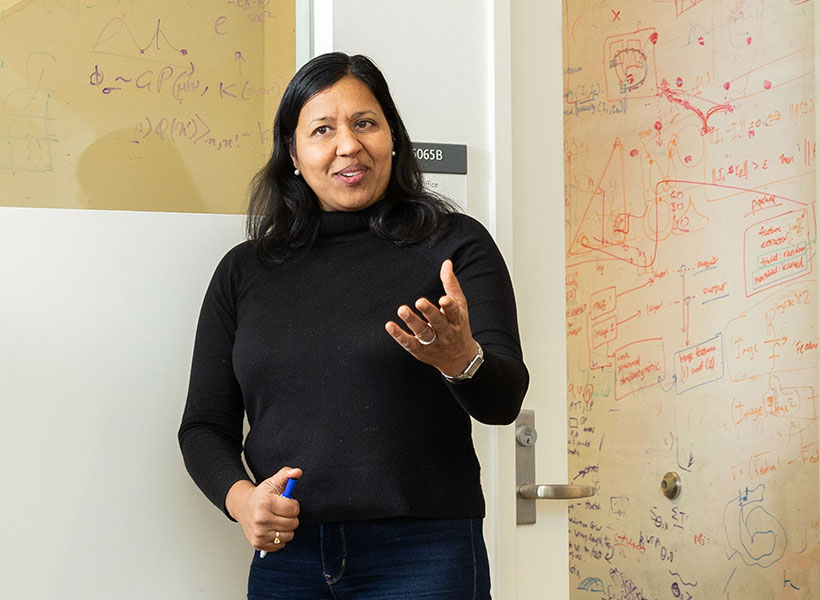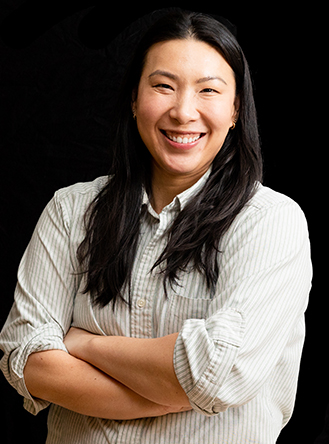This story also appears in the Fall 2024 issue of BrainScan.
___
When you arrive in a new city, every outing can be an exploration. You may know your way to a few places, but only if you follow a specific route. As you wander around a bit, get lost a few times, and familiarize yourself with some landmarks and where they are relative to each other, your brain develops a cognitive map of the space. You learn how things are laid out, and navigating gets easier.
It takes a lot to generate a useful mental map. “You have to understand the structure of relationships in the world,” says McGovern Investigator Mehrdad Jazayeri. “You need learning and experience to construct clever representations. The advantage is that when you have them, the world is an easier place to deal with.”
Indeed, Jazayeri says, internal models like these are the core of intelligent behavior.
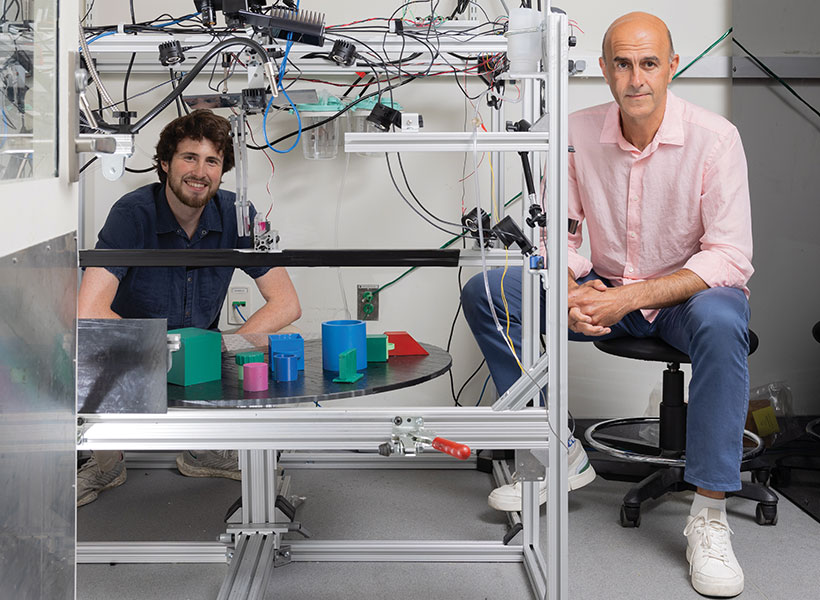
Many McGovern scientists see these cognitive maps as windows into their biggest questions about the brain: how it represents the external world, how it lets us learn and adapt, and how it forms and reconstructs memories. Researchers are learning that cells and strategies that the brain uses to understand the layout of a space also help track other kinds of structures in the world, too — from variations in sound to sequences of events. By studying how neurons behave as animals navigate their environments, McGovern researchers also expect to deepen their understanding of other important cognitive functions as well.
Decoding spatial maps
McGovern Investigator Ila Fiete builds theoretical models that help explain how spatial maps are formed in the brain. Previous research has shown that “place cells” and “grid cells” are place-sensitive neurons in the brain’s hippocampus and entorhinal cortex whose firing patterns help an animal map out a space. As an animal becomes familiar with its environment, subsets of these cells become tied to specific locations, firing only when the animal is in them.
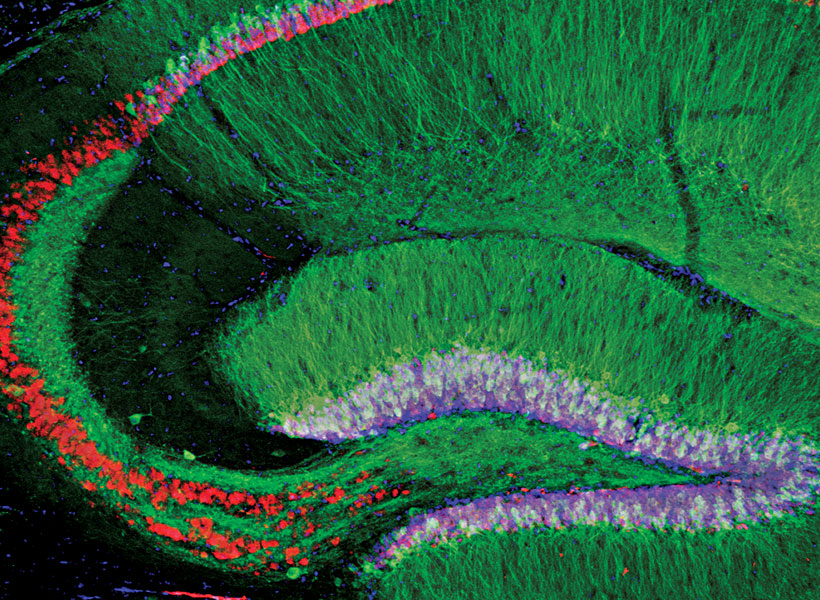
Fiete’s models have shown how these circuits can integrate information about movement, like signals from the muscles and vestibular system that change as an animal moves around, to calculate and update its estimate of an animal’s position in space. Fiete suspects the cells that do this can use the same strategy to keep track of other kinds of movement or change.
Mapping a space is about understanding where things are in relationship to one another, says Jazayeri, and tracking relationships is useful for modeling many kinds of structure in the world. For example, the hippocampus and entorhinal cortex are also closely linked to episodic memory, which keeps track of the connections between events and experiences.
“These brain areas are thought to be critical for learning relationships,” Jazayeri says.
Navigating virtual worlds
A key feature of cognitive maps is that they enable us to make predictions and respond to new situations without relying on immediate sensory cues. In a study published in Nature this June, Jazayeri and Fiete saw evidence of the brain’s ability to call up an internal model of an abstract domain: they watched neurons in the brain’s entorhinal cortex register a sequence of images, even when they were hidden from view.
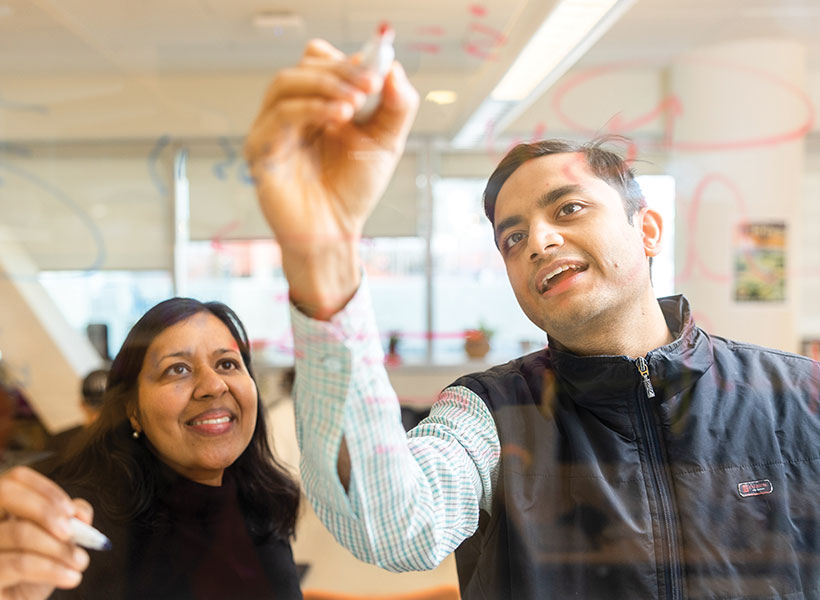
We can remember the layout of our home from far away or plan a walk through the neighborhood without stepping outside — so it may come as no surprise that the brain can call up its internal model in the absence of movement or sensory inputs. Indeed, previous research has shown that the circuits that encode physical space also encode abstract spaces like auditory sound sequences. But these experiments were performed in the presence of the stimuli, and Jazayeri and his team wanted to know whether simply imagining movement through an abstract domain may also evoke the same cognitive maps.
To test the entorhinal cortex’s ability to do this, Jazayeri and his team designed an experiment where animals had to “mentally” navigate through a previously explored, but now invisible, sequence of images. Working with Fiete, they found that the neurons that had become responsive to particular images in the visible sequence would also fire when mentally navigating the sequence in which images were hidden from view — suggesting the animal was conjuring a representation of the image in its mind.

“You see these neurons in the entorhinal cortex undergo very clear dynamic patterns that are in correspondence with what we think the animal might be thinking at the time,” Jazayeri says. “They are updating themselves without any change out there in the world.”
The team then incorporated their data into a computational model to explore how neural circuits might form a mental model of abstract sequences. Their artificial circuit showed that the external inputs (eg., image sequences) become associated with internal models through a simple associative learning rule in which neurons that fire together, wire together. This model suggests that imagined movement could update the internal representations, and the learned association of these internal representations with external inputs might enable a recall of the corresponding inputs even when they are absent.
More broadly, Fiete’s research on cognitive mapping in the hippocampus is leading to some interesting predictions: “One of the conclusions we’re coming to in my group is that when you reconstruct a memory, the area that’s driving that reconstruction is the entorhinal cortex and hippocampus but the reconstruction may happen in the sensory periphery, using the representations that played a role in experiencing that stimulus in the first place,” Fiete explains. “So when I reconstruct an image, I’m likely using my visual cortex to do that reconstruction, driven by the hippocampal complex.” Signals from the entorhinal cortex to the visual cortex during navigation could help an animal visualize landmarks and find its way, even when those landmarks are not visible in the external world.
Landmark coding
Near the entorhinal cortex is the retrosplenial cortex, another brain area that seems to be important for navigation. It is positioned to integrate visual signals with information about the body’s position and movement through space. Both the retrosplenial cortex and the entorhinal cortex are among the first areas impacted by Alzheimer’s disease; spatial disorientation and navigation difficulties may be consequences of their degeneration.
Researchers suspect the retrosplenial cortex may be key to letting an animal know not just where something is, but also how to get there. McGovern Investigator Mark Harnett explains that to generate a cognitive map that can be used to navigate, an animal must understand not just where objects or other cues are in relationship to itself, but also where they are in relationship to each other.
In a study reported in eLife in 2020, Harnett and colleagues may have glimpsed both of these kinds of representations of space inside the brain. They watched neurons there light up as mice ran on a treadmill and tracked the passage of a virtual environment. As the mice became familiar with the landscape and learned where they were likely to find a reward, activity in the retrosplenial cortex changed.
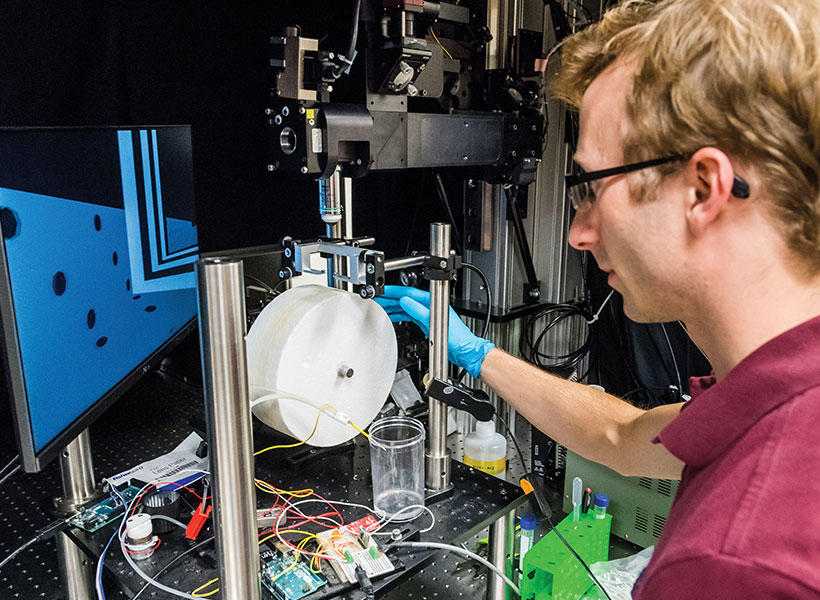
“What we found was this representation started off sort of crude and mostly about what the animal was doing. And then eventually it became more about the task, the landscape, and the reward,” Harnett says.
Harnett’s team has since begun investigating how the retrosplenial cortex enables more complex spatial reasoning. They designed an experiment in which mice must understand many spatial relationships to access a treat. The experimental setup requires mice to consider the location of reward ports, the center of their environment, and their own viewing angle. Most of the time, they succeed. “They have to really do some triangulation, and the retrosplenial cortex seems to be critical for that,” Harnett says.
When the team monitored neural activity during the task, they found evidence that when an animal wasn’t quite sure where to go, its brain held on to multiple spatial hypotheses at the same time, until new information ruled one out.
Fiete, who has worked with Harnett to explore how neural circuits can execute this kind of spatial reasoning, points out that Jazayeri’s team has observed similar reasoning in animals that must make decisions based on temporarily ambiguous auditory cues. “In both cases, animals are able to hold multiple hypotheses in mind and do the inference,” she says. “Mark’s found that the retrosplenial cortex contains all the signals necessary to do that reasoning.”
Beyond spatial reasoning
As his team learns more about the how the brain creates and uses cognitive maps, Harnett hopes activity in the retrosplenial cortex will shed light on a fundamental aspect of the brain’s organization. The retrosplenial cortex doesn’t just receive information from the brain’s vision-processing center, it also sends signals back. He suspects these may direct the visual cortex to relay information that is particularly pertinent to forming or using a meaningful cognitive map.
“The brain’s navigation system is a beautiful playground.” – Ila Fiete
This kind of connectivity, where parts of the brain that carry out complex cognitive processing send signals back to regions that handle simpler functions, is common in the brain. Figuring out why is a key pursuit in Harnett’s lab. “I want to use that as a model for thinking about the larger cortical computations, because you see this kind of motif repeated in a lot of ways, and it’s likely key for understanding how learning works,” he says.
Fiete is particularly interested in unpacking the common set of principles that allow cell circuits to generate maps of both our physical environment and our abstract experiences. What is it about this set of brain areas and circuits that, on the one hand, permits specific map-building computations, and, on the other hand, generalizes across physical space and abstract experience?
“The brain’s navigation system is a beautiful playground,” she says, “and an amazing system in which to investigate all of these questions.”


